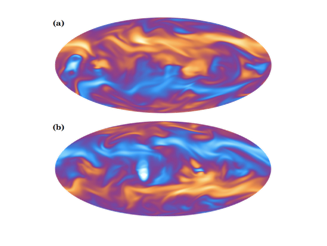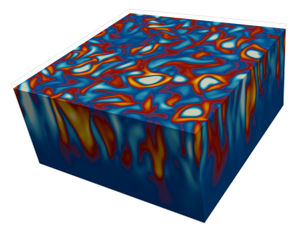Current Research
Numerical Modeling of Solar Dynamo
I. Overview :
A grand challenge in the astrophysics is the origin of self-organizing property of the magnetic field in highly turbulent flows. The solar magnetism is the front line in this area. The solar magnetic field shows a remarkable spatiotemporal coherence though it is generated by highly turbulent convection (Ra ~ 1020) operating within its interior. Our understanding on the solar magnetism has been accelerated over the past decade in response to broadening, deepening and refining of numerical dynamo modeling. However, it is still unclear what dynamo mode is excited in the solar interior and how it regulates magnetic cycle. To unveil the mystery of the solar magnetism, I’m currently working on the global and local numerical dynamo modelings of the solar dynamo with state-of-the-art massively-parallel supercomputers, such as K-computer at RIKEN and CRAY XC 30 at NAOJ.
II. Development of A New Solar Dynamo Simulation Code with Yin-Yang Grid :
Existing simulation models for the global solar dynamo are mostly spectral-based type with the spherical harmonics expansion. However, it is confronted with the parallel scaling difficulty when O(104) or more CPU cores are used. A different approach toward massively-parallel solar dynamo modeling is required for the present peta- or coming exa-scale era. This motivated us to develop a global solar dynamo simulation code based on the grid point-based approach. The Yin-Yang grid (see Kageyama & Sato 2004) is adopted as a coordinate system in our code. Since the Yin-Yang Grid is free from the coordinate singularity and the grid convergence around there, we can avoid severe time-step constraint due to the CFL condition. This newly-developed solar dynamo code opens up the way ensuring compatibility between finer grid spacing and longer time-integration which are required to resolve turbulent dynamos more accurately. With this code, we solved numerically a sun-like MHD dynamo convection system in Masada et al (2013).

































































